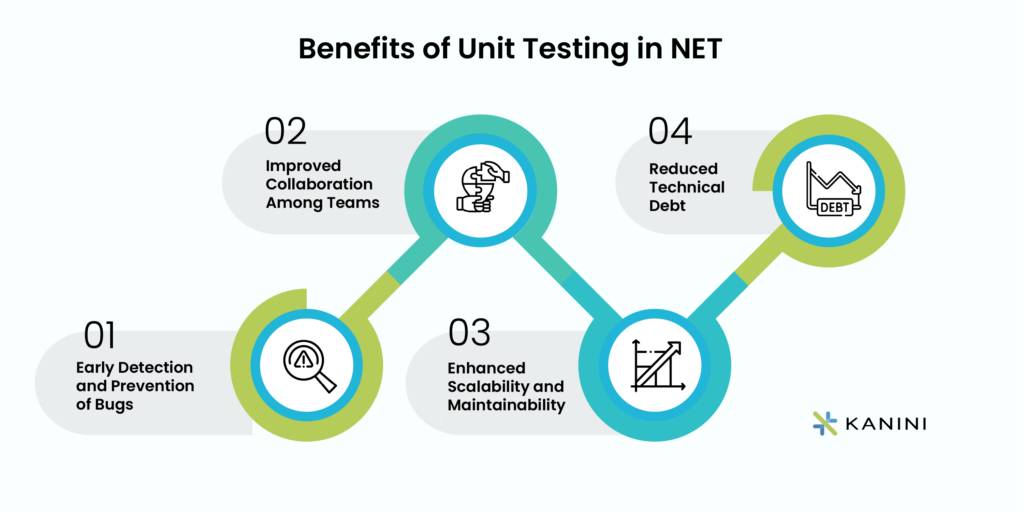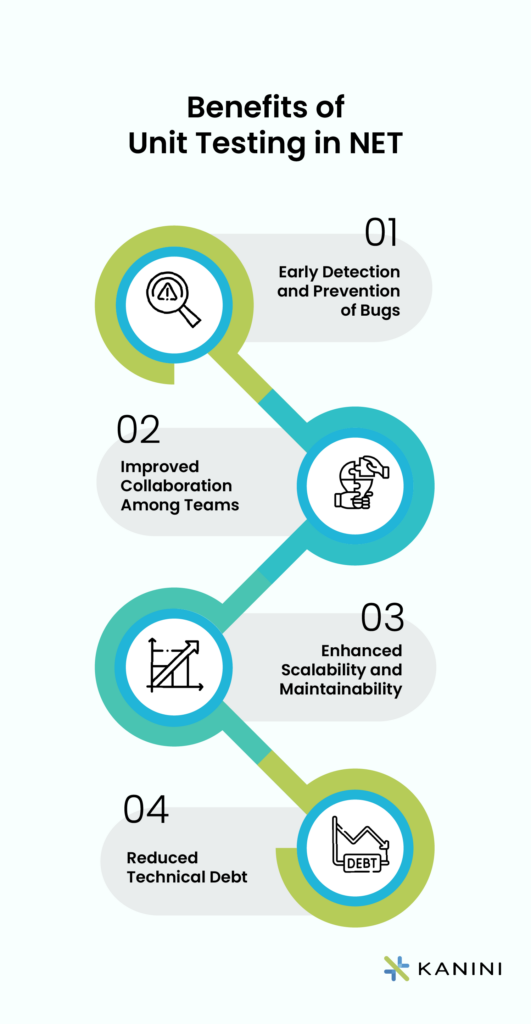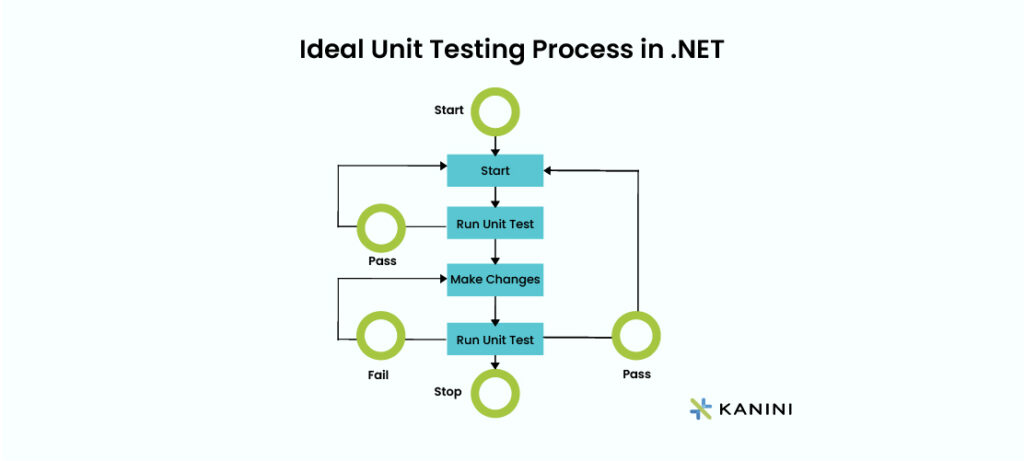Software plays a pivotal role in the success of businesses across industries, more importantly in today’s age where advancements in software development are taking place at great scale and pace. Whether it’s a web application, a mobile app, or enterprise software, delivering reliable, bug-free software is essential for customer satisfaction and brand reputation. However, software development is a complex process that involves numerous challenges like tight deadlines, evolving requirements, and the need for continuous innovation. In such an environment, software quality becomes a critical success factor.
To achieve software quality, organizations must adopt a systematic and proactive approach to testing and validation. While there are various testing techniques available, unit testing stands out as a powerful tool that can significantly enhance software quality and mitigate risks. In this article, we are going to dive into the importance, benefits, and best practices for unit testing in .NET.
What is Unit Testing?
Unit testing is a software testing technique that focuses on validating the functionality and behavior of individual units or components of a software system. A unit refers to the smallest testable part of an application, typically a method, function, or class. The primary goal of unit testing is to ensure that each unit functions correctly, adheres to requirements, and produces the expected output.
Unit testing involves writing code, known as test cases, that exercise the units in isolation. These test cases simulate different scenarios and provide input data to the unit being tested. By executing these tests, developers can verify the unit’s behavior, identify bugs or regressions, and ensure the reliability and integrity of the code.
Unit Testing in the .NET Software Development Lifecycle
Unit testing fits seamlessly into the .NET software development lifecycle, complementing other testing techniques and methodologies. It is typically performed during the coding phase, after the initial design and implementation of units.
Unit testing in .NET is especially effective when combined with modern development practices such as Agile and DevOps. In an Agile environment, test-driven development (TDD) ensures that testing is carried out continuously, allowing for quick iterations & course corrections. In DevOps, Unit testing is integrated into the CI/CD pipelines, ensuring that changes are thoroughly tested before deployment.
Benefits of Unit Testing in .NET for Businesses
.NET unit testing is not just a technical practice; it holds significant value for businesses as well. Businesses can leverage unit tests to their advantage and maximize the value they derive from testing.


- Detecting and Preventing Bugs Early: Unit tests act as an early warning system, helping businesses detect and prevent bugs at the earliest stages of the development process. By writing comprehensive unit tests for each component of the software, developers can quickly identify issues and fix them before they propagate to higher levels of testing or even reach production environments. This reduces costs associated with fixing bugs at later stages.
- Facilitating Collaboration among Development Teams: Unit tests serve as the living documentation that clearly defines the expected behavior of code units. They provide common ground for collaboration between developers, testers, and other stakeholders. By sharing and reviewing unit tests, teams can align their understanding of the software requirements and functionalities, minimizing misunderstandings and promoting effective collaboration.
- Ensuring Software Scalability and Maintainability: Unit tests contribute to software scalability and maintainability by ensuring code quality. As the software evolves and new features are added, unit tests act as a safety net, preventing unintended side effects or breaking existing functionality. They enable developers to confidently make changes without the fear of introducing regressions.
- Boosting Efficiency and Reducing Technical Debt: Unit tests lead to increased efficiency by reducing the time spent on manual testing and debugging. By catching issues early, developers can address them promptly, minimizing the accumulation of technical debt. Technical debt refers to the additional effort required to fix issues or improve the quality of the code base due to suboptimal design or implementation choices.
Best Practices for Unit Testing in .NET
Unit testing in .NET can be highly effective when approached with best practices that ensure reliable and maintainable tests.
- Writing Independent and Isolated Tests: Each unit test should be independent and isolated from others. This means that a test should not rely on the state or output of another test. Isolated tests are essential for test repeatability and reliability. By ensuring independence, developers can run tests individually or in any order without introducing interference or unexpected results.
- Using Descriptive and Readable Test Names: Clear and descriptive test names play a crucial role in understanding the purpose and behavior of a unit test. A well-named test should describe the specific scenario being tested and the expected outcome. This makes it easier for developers and other stakeholders to understand the purpose of the test and interpret the test results.
- Implementing Arrange-Act-Assert (AAA) Pattern: The AAA pattern is a widely used convention for structuring unit tests. It separates the test into three distinct sections: Arrange, Act, and Assert. Arrange is to set up the necessary preconditions and create the required objects or instances. The Act is to execute the specific behavior or method being tested. Assert is to verify the expected outcome or behavior by asserting specific conditions.
- Maintaining Code Coverage: Test Coverage refers to the extent to which the unit tests cover different parts of the code. It is good to aim for high test coverage to ensure that critical sections of the codebase are thoroughly tested. Code coverage tools such as dotCover, NCover, OpenCover, and Coverlet can help measure the effectiveness of test coverage.
- Utilizing Test Doubles: External dependencies, such as databases, web services, or file systems, can introduce complexities and inconsistencies when testing units in isolation. To address this, developers can utilize test doubles like mocks, stubs, or fakes to isolate the unit under test from its dependencies. Mocking frameworks like Moq, NSubstitute, or FakeitEasy can assist in creating these test doubles and defining their behavior during tests.


Final Thoughts
Embracing unit testing in .NET is a strategic decision that can significantly impact software quality and business outcomes. By following the best practices, integrating unit testing into the development workflow, and leveraging powerful tools and frameworks, businesses can unlock the full potential of unit testing and set themselves apart in the competitive market.
Start your unit testing journey today with KANINI and reap the benefits of enhanced software quality and business success. We are industry experts in the .NET framework with a flair for delivering successful outcomes and happy experiences for our clients. Contact us today and talk to our experts!
Author

Baskar Kuppusamy
Baskar Kuppusamy is the Associate Director of IT Application Architecture at KANINI. He is passionate about leading large-scale enterprise application development projects to success. With a background as a startup founder and a decade of international exposure, Baskar brings expert proficiency in architecting and developing enterprise applications, leveraging .NET, Angular, React, Azure, AWS, Cloud, and AI. His enthusiasm extends to conducting internal hackathons and spearheading the Architect CoP at KANINI.








